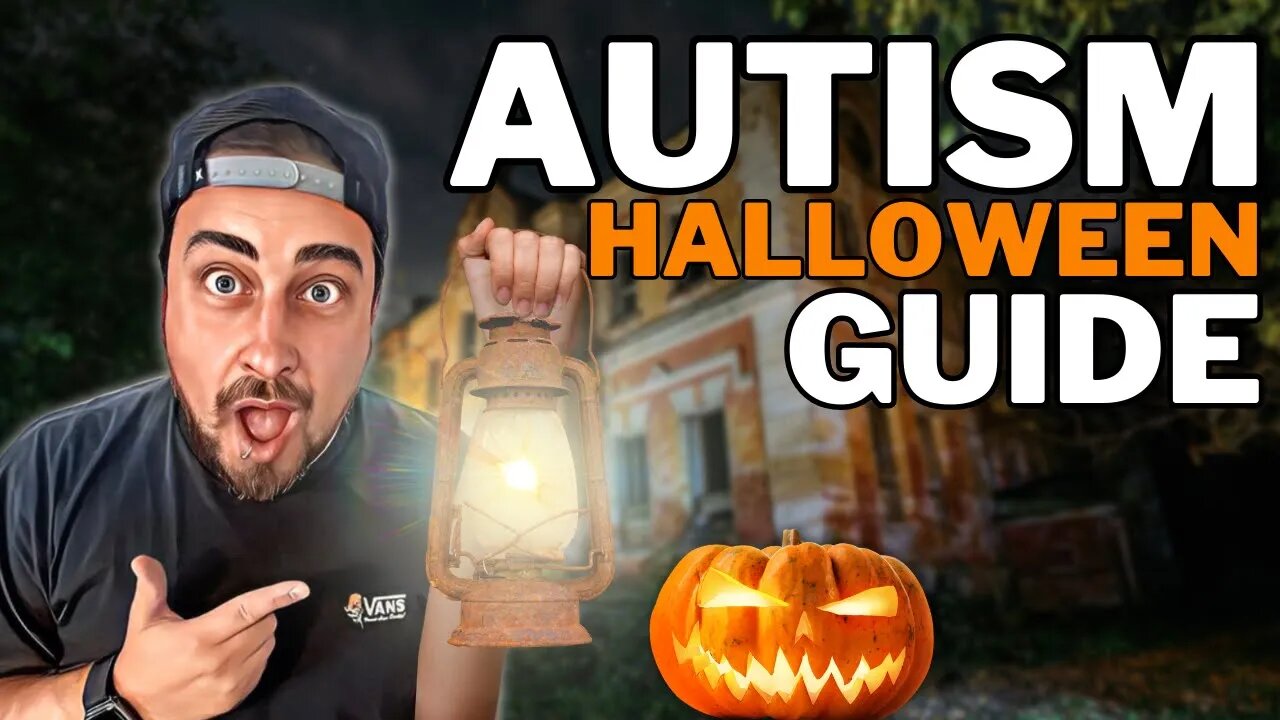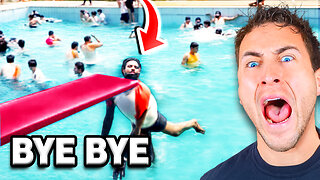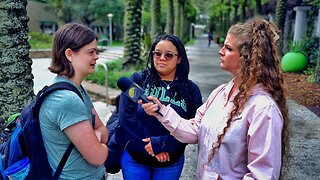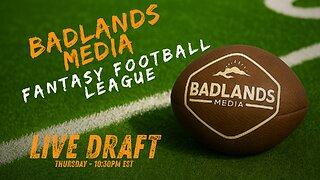Premium Only Content

Autism Halloween Guide (ESSENTIAL)
Halloween is a highly anticipated holiday that brings excitement, creativity, and fun for many children and families. @discoverbrillia
Brillia is a non-prescription homeopathic medication to help control anxiety, irritability/hyperactivity and improve focus and attention for children, teens and adults.
https://www.discoverbrillia.com [CODE: ASPIE15 for 15% OFF] For shipments to the UK please email info@discoverbrillia.com They also offer a money back guarantee.
However, for children with autism spectrum disorder (ASD) and their parents, this celebration can present unique challenges. The sensory overload, unpredictable environments, and social demands can be overwhelming for children on the spectrum. To ensure an inclusive and enjoyable experience for everyone, it is essential to create an Autism Halloween Guide that promotes understanding, empathy, and accommodation.
Choose the Right Costume:
Selecting a Halloween costume is an integral part of the festivities, but it can be a source of distress for children with autism. Consider their sensory preferences and avoid costumes with scratchy fabrics or restrictive accessories. Opt for comfortable, familiar clothing that they are accustomed to wearing, or choose a sensory-friendly costume made of soft materials. Involving the child in the decision-making process will also foster their enthusiasm for the event.
Prepare for Trick-or-Treating:
Trick-or-treating can be both exciting and overwhelming, so a little preparation can go a long way. Practice the trick-or-treating experience at home or in a familiar environment, allowing the child to understand the routine. Use visual aids, such as a social story, to explain the process of knocking on doors, saying "trick-or-treat," and receiving candy. Additionally, consider using a blue pumpkin or an autism-specific trick-or-treat bag to signal to others that the child has autism and may need extra understanding.
Sensory Considerations:
Sensory sensitivities are common in individuals with autism. The Halloween environment, with its bright lights, loud noises, and unusual textures, can be overwhelming. When possible, choose well-lit and less crowded areas for trick-or-treating. Provide noise-cancelling headphones or earplugs to help reduce auditory stimuli. If the child prefers, incorporate sensory-friendly activities like carving pumpkins or creating Halloween-themed crafts at home.
Communicate with Neighbors and Friends:
Informing neighbors and friends about your child's autism and providing them with a brief explanation of how they can help create a positive experience can make a significant difference. Encourage them to be patient, understanding, and inclusive. Small gestures like offering a non-food treat or giving the child extra time to respond can make the night more enjoyable for everyone involved.
Set Realistic Expectations:
Recognize that each child with autism is unique, and their Halloween experience might differ from typical trick-or-treating. Setting realistic expectations is crucial to avoiding disappointment. Celebrate the small victories and focus on the child's comfort and enjoyment rather than conforming to societal norms.
→ MY FREE AUTISM BOOK: https://link.heropost.io/Autismhacks
→ 50% OFF AUTISM PARENTING MAGAZINE: https://link.heropost.io/APM
→ ONLINE THERAPY (sponsored) → https://link.heropost.io/BH
→ AUTISM ALERT CARD → https://link.heropost.io/AAC
→ MY NOISE CANCELLING HEADPHONES → http://amzn.to/2goVuKf
💼 BUSINESS → TheAspieWorld@gmail.com
🔴SUBSCRIBE ➤ https://link.heropost.io/AutismYouTube
FOR MORE FOLLOW MY SOCIALS ⬇️
► INSTAGRAM: https://link.heropost.io/IG
► TWITTER: https://link.heropost.io/TW
► FACEBOOK: https://link.heropost.io/FB
► SNAPCHAT: https://link.heropost.io/SC
► TIKTOK → https://link.heropost.io/TT
► MY BLOG → https://link.heropost.io/Blog
► MY PODCAST → https://link.heropost.io/Podcast
-
 0:59
0:59
The Aspie World
1 year ago🗣🌟 Finding your social voice is a transformative journey
81 -
 2:05:26
2:05:26
Side Scrollers Podcast
19 hours ago4Chan SUES UK Government + Craig Has Mental Illness Fatigue + Knight Rider REBOOT | Side Scrollers
32.4K8 -
 19:26
19:26
GritsGG
1 day agoChat Picked My Hair Color! All Pink Loadout & Operator Challenge!
28.3K4 -
 10:32
10:32
Nikko Ortiz
1 day agoFunniest Fails Of The Month
56.7K8 -
 1:27:34
1:27:34
TruthStream with Joe and Scott
4 days agoArchitect Richard Gage: 911 truths and more #482
32.7K7 -
 LIVE
LIVE
Lofi Girl
2 years agoSynthwave Radio 🌌 - beats to chill/game to
190 watching -
 56:48
56:48
The HotSeat
14 hours agoI'm NOT Sorry! Guns Aren’t the Problem—Godless Culture Is
37.2K30 -
 9:43
9:43
The Pascal Show
16 hours ago $0.95 earnedWHOA! Annunciation School Sh**ter Identified... Heartbreaking & Insane
8.82K2 -
 22:42
22:42
Liberty Hangout
10 hours agoCollege Democrats Say Gangs Are GOOD!
82.6K79 -
 2:14:50
2:14:50
Badlands Media
16 hours agoBadlands Media Fantasy Football Live Draft
49.4K1